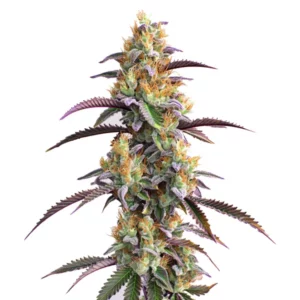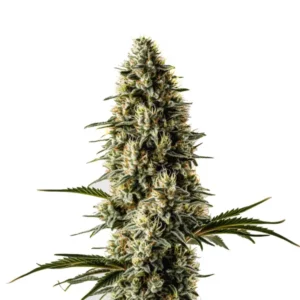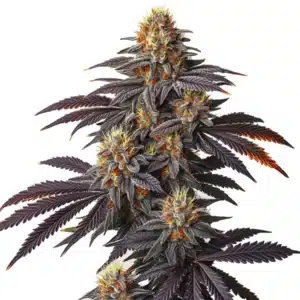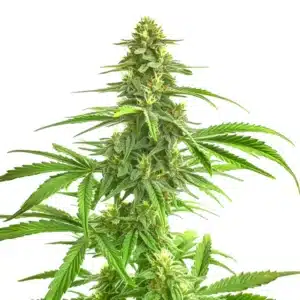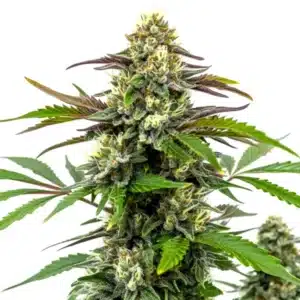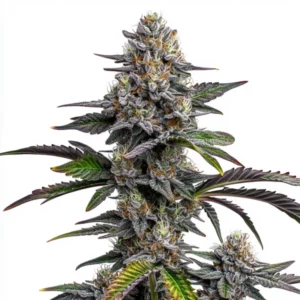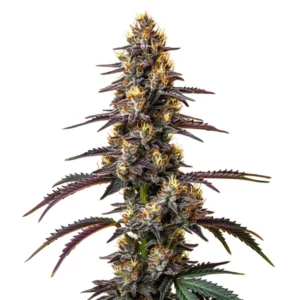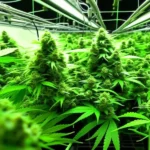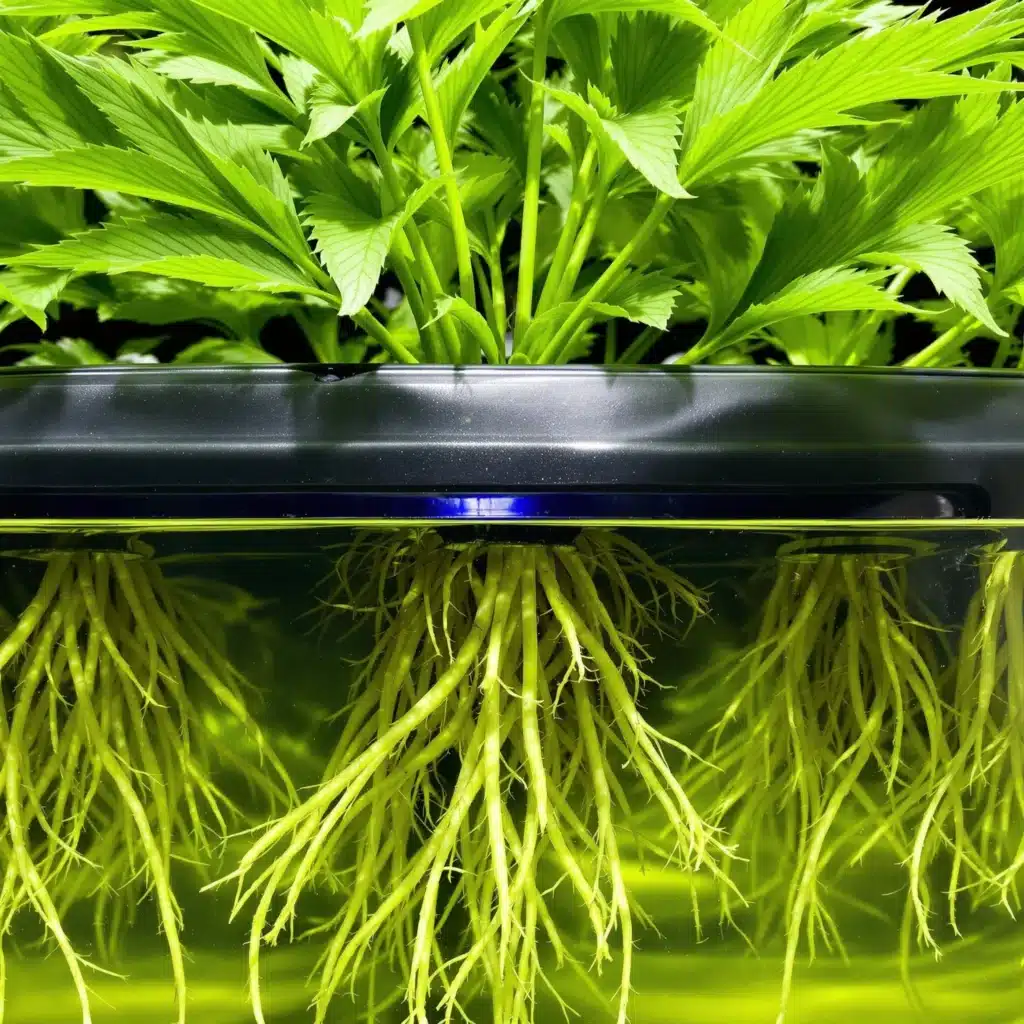
Maximizing Results with Best Nutrients for Hydroponics in Cannabis Cultivation
Hydroponics has revolutionized cannabis cultivation, offering growers precise control over nutrient delivery and water use. However, using the best nutrients for hydroponics is critical to achieving robust growth, potent flowers, and high yields. In this guide, we’ll explore the ideal nutrients, types, and application methods for successful hydroponic cannabis grows.
Best Nutrients for Hydroponics: A Complete Guide
Hydroponic Nutrients
What Makes Hydroponic Nutrients Different from Soil-Based Nutrients?
Hydroponic nutrients are specially formulated for water-based systems, where plants receive nutrients directly through a nutrient solution. Unlike soil-based systems, hydroponics lacks the natural buffers provided by soil, making nutrient precision essential. These solutions are designed to be water-soluble, ensuring plants absorb nutrients efficiently without blockages.
Recommended Strains
Gator Breath
|
|
THC | 30% - 33% (High) |
|
|
Type | Feminized |
|
|
Yield | Medium |
|
|
Phenotype | 70% Indica / 30% Sativa |
Bubblegum
|
|
THC | 13% - 25% (Medium) |
|
|
Type | Feminized |
|
|
Yield | Medium |
|
|
Phenotype | 50% Indica / 50% Sativa |
Hydroponic growers must monitor nutrient concentrations closely to prevent overfeeding or deficiencies. Tools like pH meters and EC meters help maintain balance, ensuring plants thrive in this controlled environment.
Essential Macronutrients and Micronutrients for Hydroponic Cannabis
Cannabis plants require three primary macronutrients: nitrogen (N), phosphorus (P), and potassium (K). During the vegetative phase, nitrogen supports leaf and stem development. In the flowering phase, phosphorus and potassium enhance bud production and potency.
Micronutrients like calcium, magnesium, and iron play critical roles in maintaining plant health. Calcium strengthens cell walls, magnesium aids chlorophyll production, and iron supports enzymatic processes. Including these elements in your nutrient solution prevents common deficiencies and boosts overall plant vitality.
Why pH Levels Matter in Hydroponic Nutrient Solutions
Maintaining proper pH levels is crucial for nutrient absorption in hydroponics. Cannabis plants typically thrive at a pH range of 5.5 to 6.5. Deviations from this range can cause nutrient lockout, leading to deficiencies and stunted growth. Regular pH checks ensure nutrients remain accessible to the plants.
Key Nutrients for Each Growth Stage
Vegetative Stage: High Nitrogen Requirements
During the vegetative phase, cannabis plants need higher nitrogen levels to support leafy growth and strong stems. Products with an NPK ratio like 3-1-2 or 4-2-3 are ideal. Nitrogen deficiency often results in yellowing leaves, which can quickly impact plant health if left uncorrected.
Feeding schedules during this stage should include frequent but moderate nutrient applications. Overfeeding nitrogen can lead to excessive leafiness, reducing energy available for future flowering.
Flowering Stage: Boosting Phosphorus and Potassium
As cannabis transitions to flowering, its nutrient needs shift. Phosphorus encourages bud development, while potassium improves resistance to pests and environmental stress. Using a bloom booster with an NPK ratio like 1-3-2 ensures plants receive the nutrients they need for maximum yield.
Timing is critical during this phase. Introducing phosphorus and potassium too early can disrupt vegetative growth, while delaying it can hinder flower production. Gradual transitions in nutrient composition are key.
Transition Periods: Balancing Nutrient Levels for Healthy Growth
The period between vegetative and flowering stages requires a balanced approach. Products with equal NPK ratios, such as 2-2-2, help smooth the transition. Gradual changes in feeding schedules prevent plant stress and prepare cannabis for the demands of flowering.
Promos & Deals
Types of Nutrients for Hydroponic Systems
Liquid Nutrients vs. Powdered Nutrients
Advantages of Liquid Nutrients for Hydroponics
Liquid nutrients are pre-mixed and easy to use, making them popular among beginners. Their precise formulations simplify feeding schedules, reducing the risk of errors. Liquid nutrients dissolve easily, ensuring even distribution in hydroponic systems.
Why Powdered Nutrients Are Popular Among Growers
Powdered nutrients are more cost-effective and have a longer shelf life. They allow growers to customize nutrient concentrations, catering to specific plant needs. However, they require thorough mixing to prevent sediment buildup in the reservoir.
Organic vs. Synthetic Nutrients
The Benefits of Organic Nutrients in Hydroponics
Organic nutrients enhance microbial activity, promoting a natural growing environment. Products like compost teas or fish emulsions are excellent choices for growers seeking sustainable practices. However, organic nutrients may require additional filtration to avoid clogging hydroponic systems.
Efficiency and Control with Synthetic Nutrients
Synthetic nutrients offer precise control over nutrient delivery, making them ideal for hydroponics. These lab-formulated products ensure consistent results and are less prone to contamination compared to organic alternatives. Many synthetic options are designed specifically for cannabis, providing tailored nutrient profiles.
Single-Part vs. Multi-Part Nutrient Solutions
Simplified Feeding with Single-Part Nutrients
Single-part nutrient solutions combine all essential nutrients into one product. They are convenient and reduce the complexity of managing separate nutrient components. These solutions are perfect for beginners looking for simplicity.
Customizing Nutrient Ratios with Multi-Part Solutions
Multi-part nutrient systems, such as two-part or three-part solutions, allow for precise adjustments during different growth stages. These are ideal for advanced growers aiming to optimize nutrient delivery for maximum yield and quality.
How to Use Hydroponic Nutrients Effectively
Preparing and Mixing Nutrient Solutions
Step-by-Step Guide to Mixing Hydroponic Nutrients
- Fill your reservoir with clean, room-temperature water.
- Add nutrients in the order specified by the manufacturer. Usually, micro nutrients come first, followed by macro nutrients.
- Stir the solution thoroughly after each addition to ensure even distribution.
- Test and adjust the pH to the desired range (5.5-6.5).
Tips for Avoiding Nutrient Imbalances
Use an EC or TDS meter to measure nutrient strength. Over-concentrated solutions can damage plants, while under-concentration may result in deficiencies. Always start with lower concentrations and adjust gradually based on plant response.
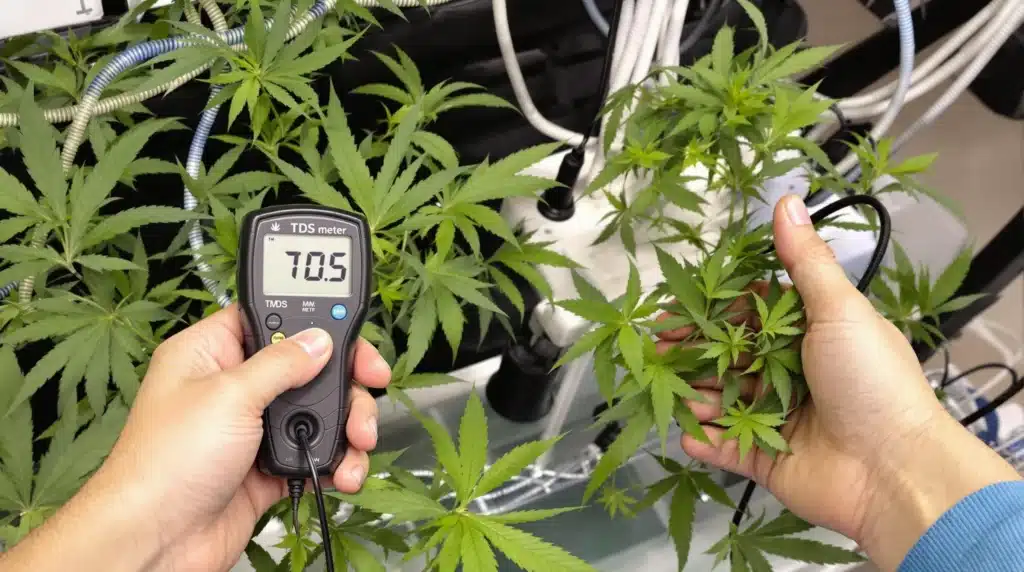
Monitoring and Adjusting Nutrient Levels
Using EC and TDS Meters to Track Nutrient Strength
Electrical conductivity (EC) and total dissolved solids (TDS) meters provide accurate readings of nutrient concentration. Regular monitoring ensures plants receive the right amount of nutrients without overfeeding.
Adjusting Nutrient Levels for Optimal Growth
Adjust nutrient levels based on plant size, growth stage, and environmental conditions. Younger plants require lighter nutrient solutions, while mature plants can handle higher concentrations to support their increasing metabolic demands. Consistent observation of plant health is crucial, as changes in leaf color, stem strength, or growth rate often signal nutrient needs.
Tailoring feeding schedules prevents nutrient-related issues that can stunt growth or reduce yields. For example, during heatwaves, plants may benefit from increased potassium to help manage stress, boost photosynthesis, and improve water retention. Similarly, lowering nitrogen in the late flowering stage ensures energy focuses on bud development, maximizing potency and flavor.
Preventing Common Nutrient Issues
Signs of Overfeeding in Hydroponic Systems
Symptoms of overfeeding include yellowing or burnt leaf tips, slowed growth, and residue buildup in the reservoir. Flushing the system with plain water helps reset nutrient levels. Consistent monitoring and gradual adjustments reduce the risk of overfeeding.
Correcting Nutrient Deficiencies in Hydroponic Plants
Deficiency symptoms include discolored leaves, stunted growth, and weak stems. Identify the missing nutrient and supplement it through targeted feeding or foliar sprays for quick absorption. Maintaining a detailed grow log can help pinpoint recurring deficiencies and improve future grows.
Hydroponic Cannabis Strains for Exceptional Growth
When cultivating cannabis hydroponically, choosing the right strains can significantly impact your yields, growth speed, and overall success. Here are three outstanding strains that thrive in hydroponic systems:
Bubble Gum Sherb
Genetics and Traits: Bubble Gum Sherb is a hybrid strain that combines the sweet and fruity essence of Bubble Gum with the creamy, dessert-like qualities of Sherbet. Known for its balanced growth and vibrant terpene profile, it’s a favorite among hydroponic growers.
Why It’s Great for Hydroponics: Bubble Gum Sherb thrives in hydroponic systems due to its ability to absorb nutrients efficiently, leading to robust growth and dense bud formation. Its adaptability makes it an excellent choice for growers seeking a flavorful and high-yielding strain.
Effects and Aroma: This strain offers a euphoric and relaxing experience, perfect for unwinding. The flavor profile includes sweet bubblegum notes paired with creamy undertones, making it a delight for connoisseurs.
Red Strawberry Banana Auto
Genetics and Traits: Red Strawberry Banana Auto is an autoflowering strain with vibrant red hues and a unique genetic lineage of Strawberry Banana and autoflowering Ruderalis. Its quick flowering time and striking appearance make it a standout choice.
Why It’s Great for Hydroponics: This strain excels in hydroponic setups, where its nutrient needs can be precisely met. The controlled environment enhances its vivid coloration and terpene production, delivering exceptional visual and aromatic appeal.
Effects and Aroma: Red Strawberry Banana Auto offers uplifting and creative effects, making it ideal for daytime use. Its sweet and fruity aroma, reminiscent of strawberries and bananas, adds to its allure.
Gator Breath
Genetics and Traits: Gator Breath is an indica-dominant hybrid with a potent lineage of Mendo Breath and OG genetics. Known for its dense buds and high resin production, it’s a top choice for extract enthusiasts.
Why It’s Great for Hydroponics: Gator Breath’s compact structure and high yield potential make it perfect for hydroponic systems. Precise nutrient control enhances its resin production, resulting in sticky, trichome-laden buds within a short flowering period.
Effects and Aroma: This strain delivers deeply relaxing effects, ideal for stress relief and sleep. Its aroma combines earthy and skunky notes with a hint of sweetness, creating a unique sensory experience.
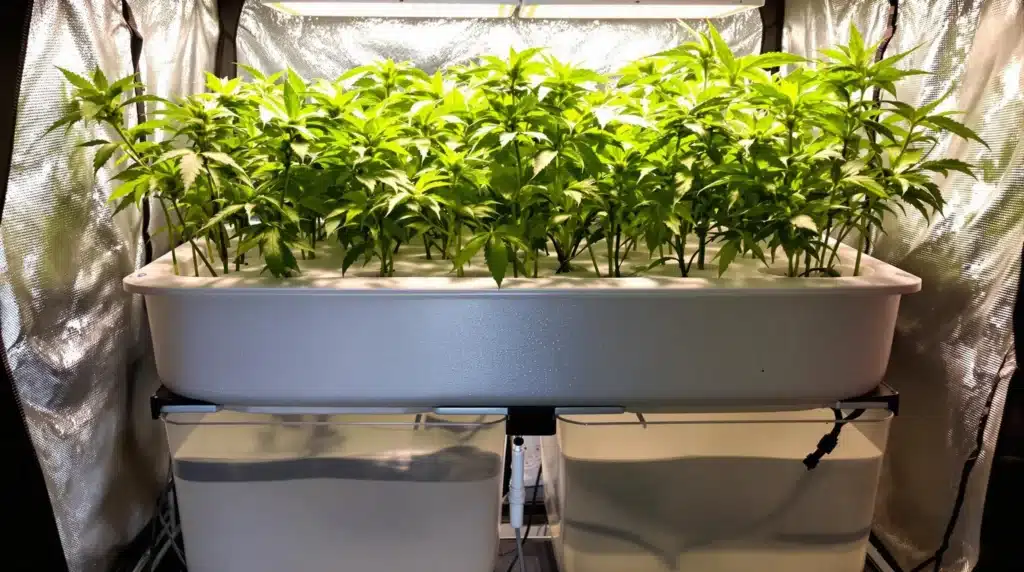
FAQs About Hydroponic Nutrients
Can these strains be grown in soil as well?
Yes, while these strains excel in hydroponic systems due to precise nutrient delivery and faster growth rates, they can also be successfully cultivated in soil. Growing them in soil may result in slightly different terpene profiles and growth times, but the quality remains high.
How Often Should I Change My Hydroponic Nutrient Solution?
Change the nutrient solution every 1-2 weeks to prevent imbalances and contamination. Regular changes ensure plants receive fresh nutrients and maintain optimal growth conditions.
Can I Use Soil-Based Nutrients in Hydroponic Systems?
No, soil-based nutrients are not suitable for hydroponics as they are not fully water-soluble. Use hydroponic-specific nutrients to prevent clogging and ensure proper nutrient absorption.


